Tools to manage repairs on your own and a roadside assistance plan when you require help beyond what you can tackle yourself — no RVer’s rig is complete without both of these critical emergency options.
Good Sam Roadside Assistance helps you get back on the road when the job requires professional help.
![]()
Over the years, I’ve talked to plenty of folks who wanted to hit the open road, but were afraid of what might go wrong. Traveling in an RV, particularly one that’s old enough to vote, has more than its share of headaches. Parts that have been plugging along since the Clinton administration finally snap. Brittle belts break. Tiny squeaks suddenly turn into big bangs. Further into the RV, sinks drip, toilets leak, fans stop spinning. But no one should let these problems stop them from creating awesome memories with their families.
Everyone who owns an RV should be prepared for the inevitable. Thankfully when good RVs go bad, having roadside assistance and the proper tools in your vehicle will stop most situations from getting worse.
An ounce of prevention, a pound of cure
If you take away anything else from this article, let it be this: Don’t neglect your routine maintenance. If you change your oil/brakes/filters when you’re supposed to and react to any out-of-the-ordinary noises or lights on the dash when they arise, you’ll avoid so many problems. I learned my lesson about neglecting maintenance.
A few years ago, I was in the midst of a trip through the Dakotas. The pulleys holding my serpentine belt in place typically squeaked for a moment or three when starting my van, but over the course of the trip, the period grew longer and longer. It got to the point the squealing lasted 10 or 20 minutes. I knew something was wrong, but I put off stopping by a local Firestone until I had an off day in my planned itinerary. I was literally passing by Mount Rushmore when fate decided my off day was right now.
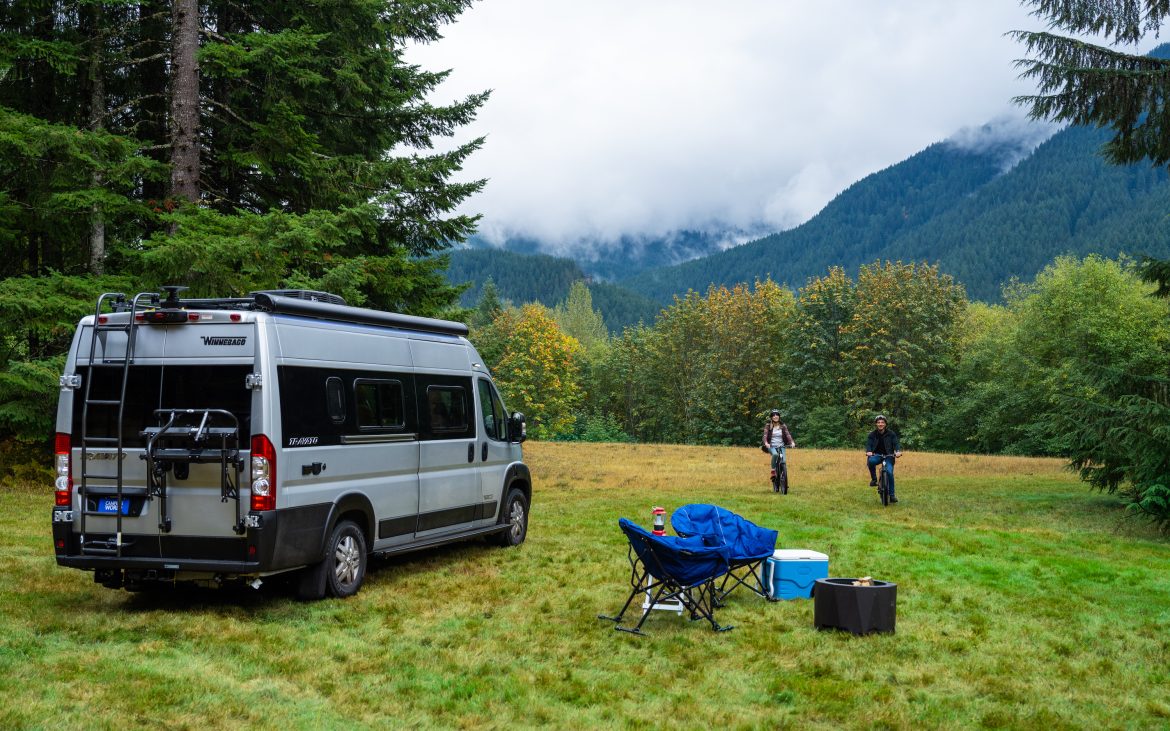
Courtesy of Camping World
I heard a loud pop, then banging under the hood. My power steering was gone and I had to muscle the van into a parking lot. With Teddy Roosevelt looking on, I phoned roadside assistance and relayed my situation. Despite it being the middle of the night, the operator told me she was dispatching a flatbed. She was as honest as Abe, because the driver arrived relatively soon thereafter. Not only was my serpentine belt shredded, but the driver also discovered I was missing a bolt to one of my shocks, which explained the bumpy ride I’d had in the Badlands days earlier.
Thankfully I was towed to a garage that was used to dealing with traveling RVers; they had me back on the road before lunch the next day. While I hadn’t budgeted the cost of the repair, I was doubly lucky that it was less than I anticipated. If I didn’t have roadside assistance, I know that bill would have been much higher. (Of course, replacing the belt and pulleys beforehand would have been even cheaper.)
The benefits of Good Sam Roadside Assistance (and tools)
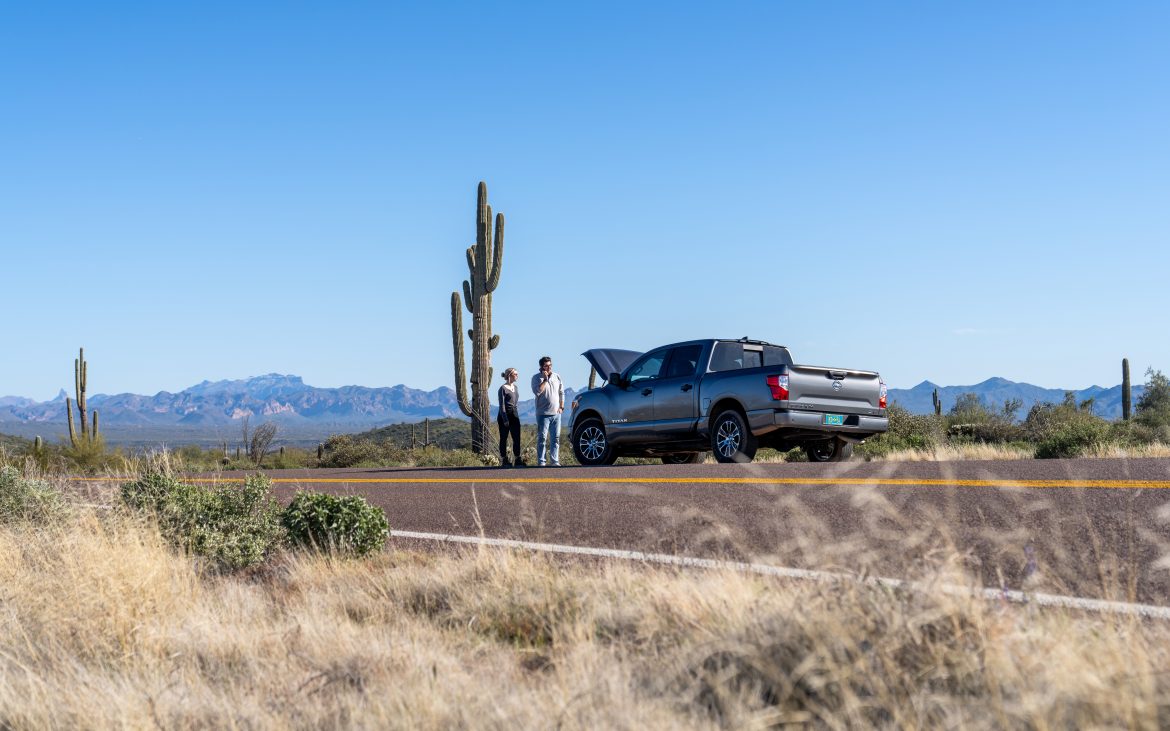
I consider the money I spend on roadside assistance each year kind of like an anti-anxiety prescription. It eases my mind knowing that when things go wrong – and they inevitably will – help is just a phone call away. If I’m on a distant Forest Service road and something goes wrong, I know I can call Good Sam Roadside Assistance and get towed back to a service center. I’ve changed dozens of tires in my life, but what if my spare has lost air since the last time I checked it? Good Sam can not only bring a new tire to me, but they’ll also replace it. (There is an extra fee for this, of course.) Running on empty, gambling if I can make it to the next Loves selling gas 25 cents cheaper per gallon and lose? Good Sam Roadside Assistance will be the good Samaritan, bringing me gas.
If there’s an issue inside the coach, Good Sam’s certified master technicians can give free, over-the-phone diagnoses and troubleshooting. But in order to fix those problems, you’re going to need your own tools (or take your RV to the garage). Since I’ve owned my Roadtrek, I’ve replaced the ceiling fan, toilet, galley sink, and even the sewer hose. (Twice on that last one; you can say I have … crappy luck. Cue rimshot.)
Keeping a roadside toolkit
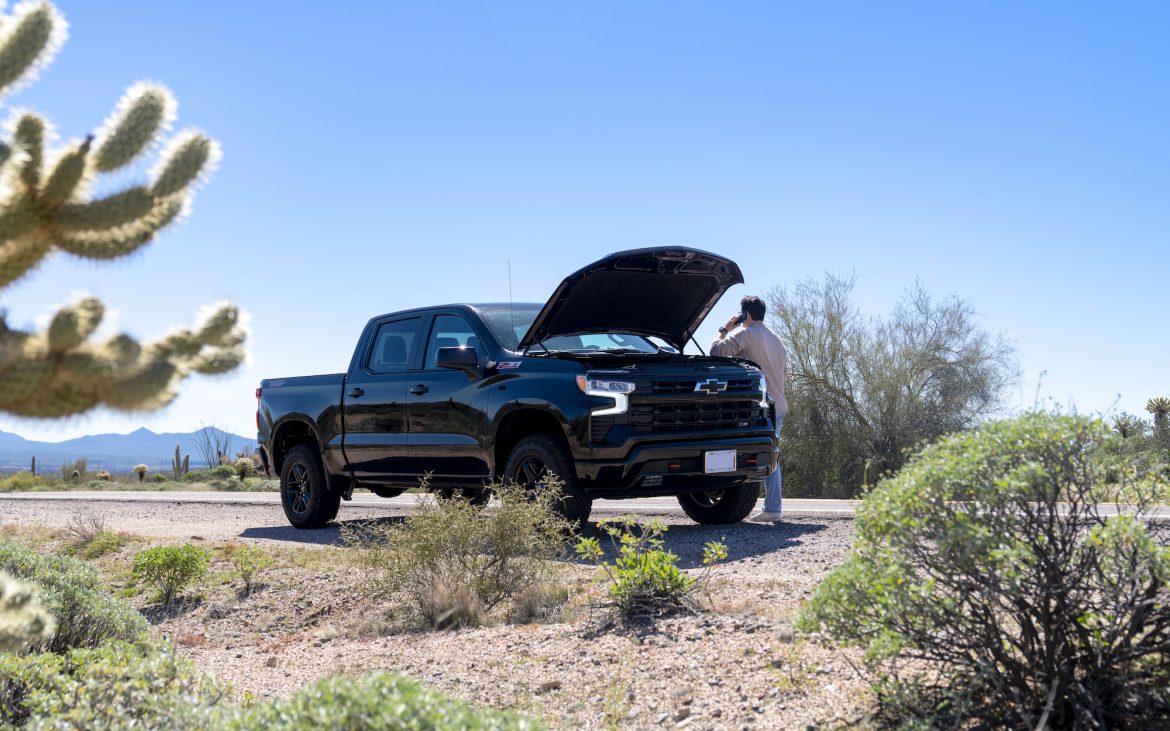
So what tools should you bring with you on every trip?
- Screwdriver with a variety of bits: Honestly, I typically carry both a handheld screwdriver and a 12V Black & Decker drill/driver. Both have come in handy on several occasions over the years. The multiple bits are crucial; I’ve helped out one or two folks on the road who hadn’t realized that their RV used specialized screws.
- Wrenches and a Socket Set: So many items in your RV are held together by bolts and nuts; you need to remove them somehow.
- Can of either WD-40 or liquid Teflon: If you haven’t removed a part in 20+ years, you can bet that it’s not going to budge without a little bit of convincing.
- Tape Measure: Measure twice, only go to Camping World or hardware store for a replacement part once. (Who am I kidding? Every time I do a project, I’m usually heading back three or four times.)
- Package of common fuses: I’ve only had to break into the box once or twice over the years, but on those rare occasions, you better believe I’m glad I have replacements on hand.
- Gorilla Tape: One of the side windows lost adhesion and almost fell off. I used Gorilla Tape to hold it in place until I made a more permanent repair … nearly two years later. I use Gorilla Tape all the time, and it’s rarely let me down.
- Mobile Jumpstarter/Tire inflator: My van is old enough that the front headlights don’t automatically turn off with the vehicle. Needless to say, I need to jump my battery a few times a year. While jump starts are included in Good Sam’s roadside assistance, I’m usually camping somewhere where it would take a driver a while to reach me. A jumpstarter solves that issue.
- Flashlight/Headlamp: I’m an old man now, and my eyesight isn’t as good as it once was. A good flashlight or headlight is a necessity whenever I’m looking under the vehicle or hood.
I love that many of the problems that pop up, I can fix myself or with the help of a YouTube video or two. When the cheap particleboard tambour cabinet door finally gave out, a DIY tutorial on the app showed me how to build a brand new, stronger tambour. Doing it myself gave me a sense of pride and true ownership than if I’d simply paid for a replacement. Likewise, every time I use the toilet or dump the black tank, I smile knowing I did those repairs myself. (OK, that may be an exaggeration.) If I can do it, believe me, you can too.



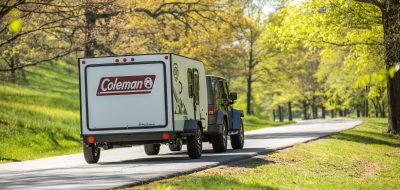
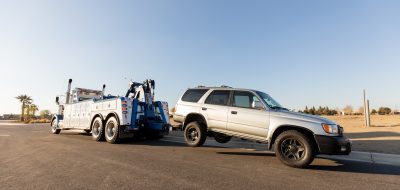
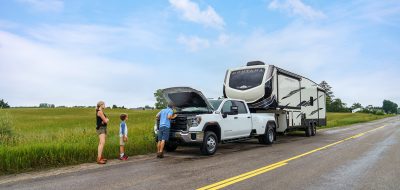



Michael Schuetz
I keep a digital photo of the tools I should pack. I take lots of tape, wire, cords but will add the Gorilla tape you mention. Thank you.
Ronnie Hall
Wouldn’t leave home without the Good Sam roadside assistance. Have been a member for 15 years, and have had no problems with Good Sam’s.